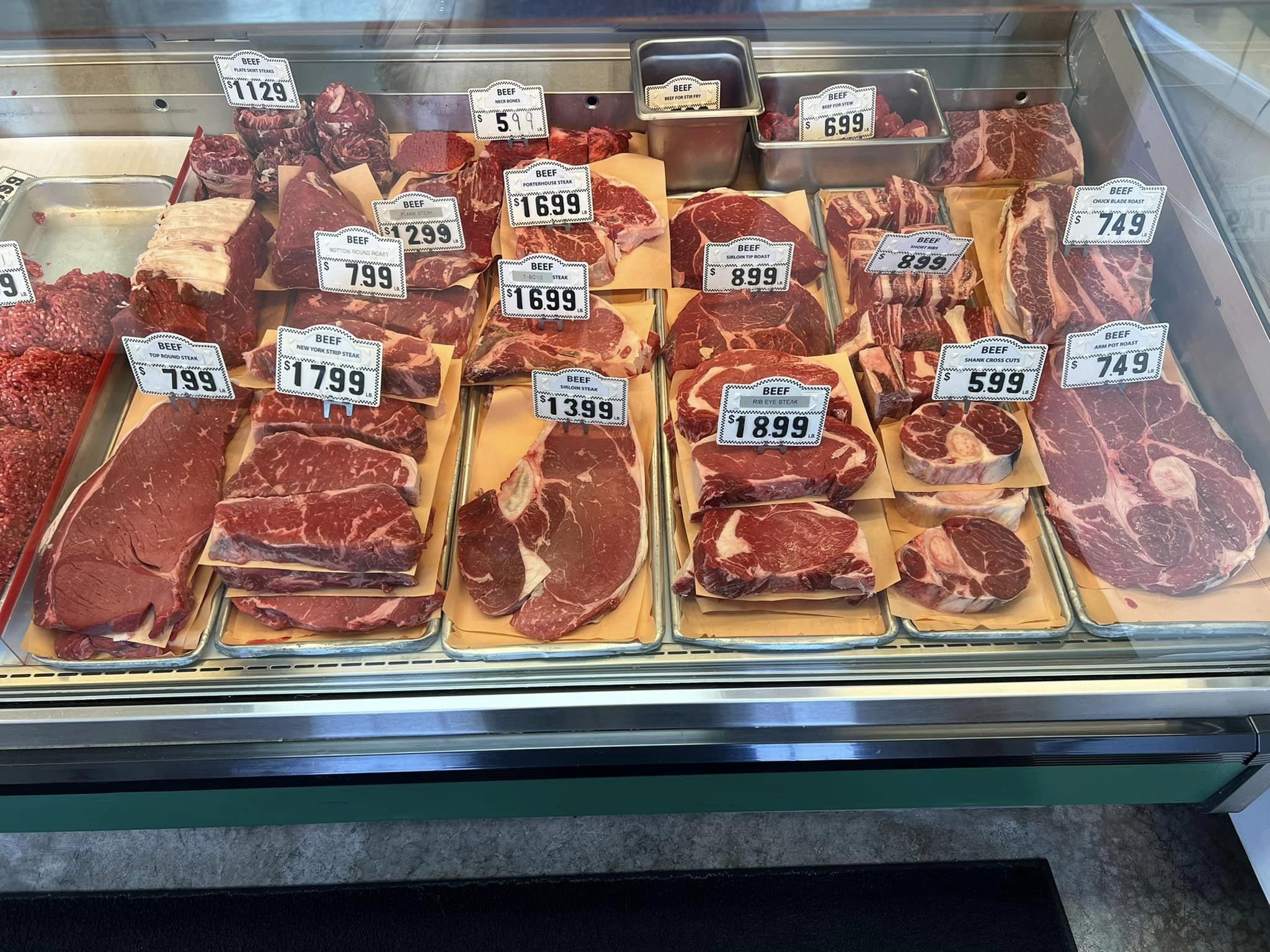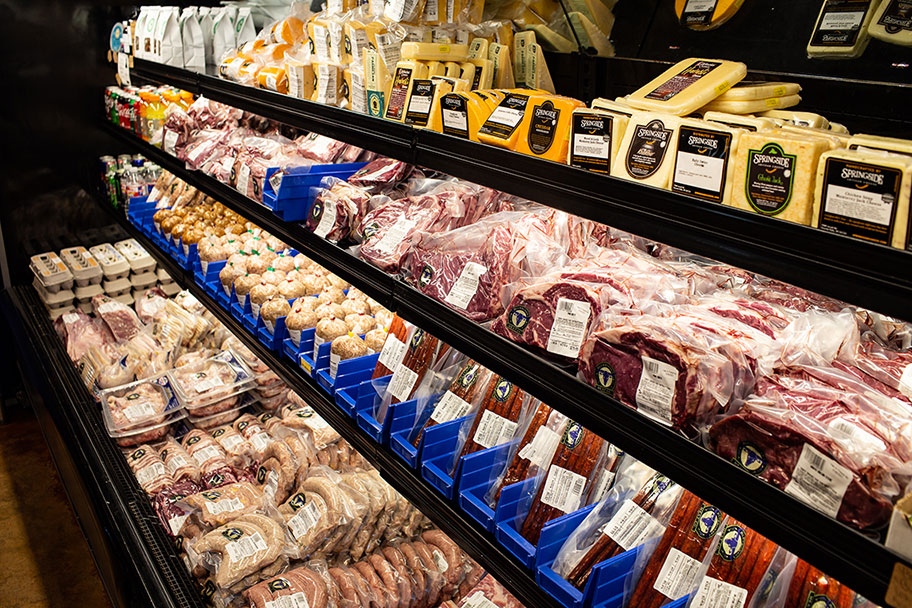Discover the Regional Flavor at Bagley Farms Meat Market Edwardsville IL: Fresh and Delicious
Discover the Regional Flavor at Bagley Farms Meat Market Edwardsville IL: Fresh and Delicious
Blog Article
Reveal the Art of the Butcher's Cut in a Modern Meat Market
In the ever-evolving landscape of contemporary meat markets, the butcher's cut has transcended its standard origins, merging old-time workmanship with modern practices. What truly sets the contemporary butcher apart is their capability to create a much deeper connection in between customers and the origins of their meat.
Development of Butchery Strategies

The mid-20th century saw butchery methods additionally improved by clinical insights into muscle biology and meat aging, improving both tenderness and preference. Technologies like vacuum packaging and refrigeration expanded product shelf-life, allowing butchers to expand offerings and enhance quality assurance. This duration likewise marked the increase of specific equipment, such as band saws and meat slicers, which boosted accuracy and effectiveness in meat handling.
The 21st century has actually presented electronic innovation into the butchery realm. Digital systems now assist in monitoring pet provenance and maximizing cuts to fulfill particular consumer preferences. In addition, a resurgence in artisanal butchery has actually emerged, blending traditional skills with modern-day understanding to accommodate customers looking for honest and lasting meat options. This advancement underscores a dynamic interplay between tradition and technology, meeting modern demands while preserving the craft's heritage.

Understanding Meat Cuts

Comprehending the details of meat cuts is vital for both butchers and consumers seeking high quality and worth. For butchers, accurate cuts mirror skill and respect for the craft, guaranteeing marginal waste and ideal return.
The primary classifications of meat cuts consist of primal, sub-primal, and retail cuts. Butchers then damage these down additionally right into sub-primal cuts, prior to ultimately creating retail cuts offered to customers, like ribeye or tenderloin.
Comprehending muscle composition is important; muscular tissues made use of more regularly by the animal have a tendency to be harder and are best fit for slow-moving cooking approaches, while less-used muscles, like those found in the loin, are more tender and ideal for cooking or roasting. Knowledge with these differences empowers consumers to make informed options, improving their cooking ventures.
Picking High Quality Meat
Picking the appropriate meat useful reference entails greater than simply picking a visually appealing piece from the display screen. The art of picking high quality meat needs a discerning eye and knowledge of details features that signify quality and quality. Pay attention to the shade; beef needs to have an intense, cherry-red tone, while lamb needs to exhibit a soft pink tone, and pork a light pink. This suggests the meat is fresh and hasn't been revealed to oxygen for also long.
Secondly, think about the marbling, which describes the white flecks of fat within the muscle. Correct marbling is an essential sign of tenderness and flavor, as it melts throughout food preparation, improving the meat's juiciness. Remember, greater marbling often associates with exceptional quality cuts, such as USDA Prime.
Structure is an additional crucial element; meat must really feel strong to the touch, not slimy or excessively soft. Furthermore, bear in mind the scent. Fresh meat needs to have a tidy, neutral odor, devoid of any kind of sour or off-putting smells.
Combining Cuts With Cooking Approaches
Effectively coupling cuts of meat with the ideal food preparation approaches is crucial for achieving ideal taste and structure. These approaches enhance the meat's all-natural tastes and make sure a juicy surface.
On the other hand, harder cuts like brisket and chuck roast are abundant in collagen, which breaks down right into gelatin when prepared gradually. These cuts are suitable for braising or sluggish roasting, enabling the meat to soften over time and develop deep, complex tastes. Cuts such as short ribs and pork shoulder make out well with slow-cooking techniques, where extended cooking times transform their durable structures into delicious meals.
Lamb shanks and oxtail, which require extended food preparation to tenderize, are perfect candidates for cooking or slow simmering. These approaches coax out rich, hearty flavors while keeping wetness. By recognizing the unique attributes of each cut, chefs and home chefs alike can elevate their culinary developments, making sure each meal is both pleasing and remarkable.
The Butcher's Role Today
Browsing the progressing landscape of the contemporary meat market, the butcher's role today extends beyond simple prep work of cuts. Contemporary butchers are culinary craftsmens, instructors, and supporters for lasting methods.
In addition to explanation crafting accurate cuts, butchers now engage straight with customers, offering cooking recommendations and customizing choices to match individual requirements and choices. Their expertise in meat aging, marbling, and taste profiles equips consumers to make educated decisions, enhancing their cooking experiences. This customized service exemplifies the butcher's advancing duty as a relied on consultant in the cooking area.
In addition, butchers are pivotal in decreasing waste, making use of whole pets to create diverse items such as sausages and supplies - bagley farms meat market edwardsville il. This extensive technique not just respects the animal yet additionally lines up with contemporary sustainability objectives. This way, the contemporary butcher personifies both tradition and innovation, adjusting to an ever-changing market while preserving the creativity and honesty of their craft

Final Thought
Mastery in understanding varied meat cuts and top quality signs equips butchers to offer enlightened suggestions, lining up specific cuts with ideal food preparation methods. By honoring historical practices while welcoming contemporary needs, the butcher's duty remains essential in today's read review advanced meat market.
Report this page